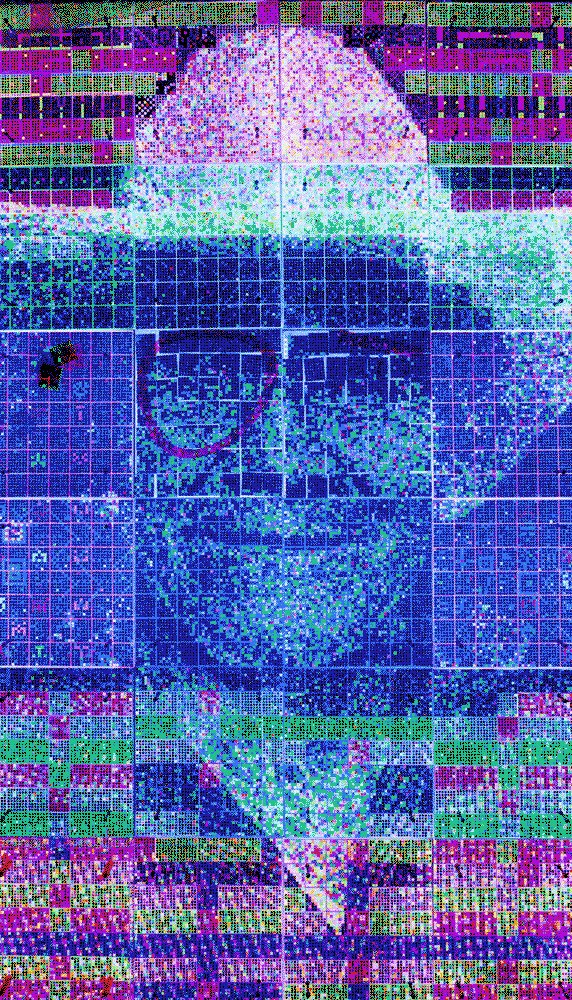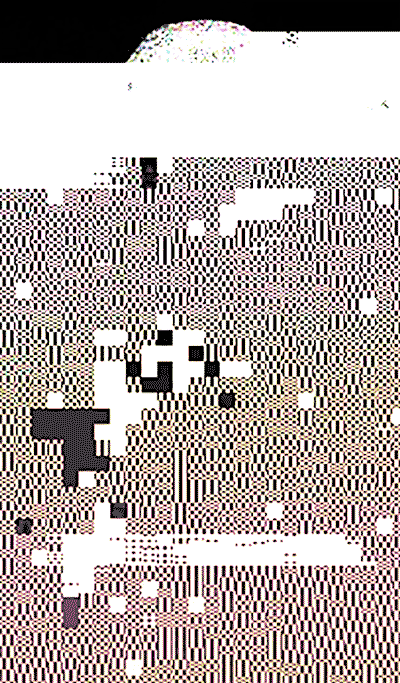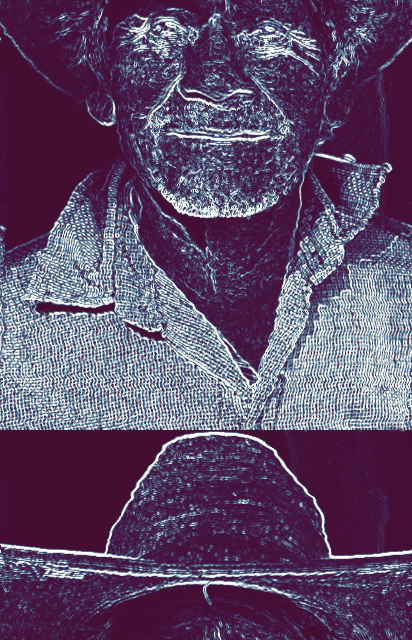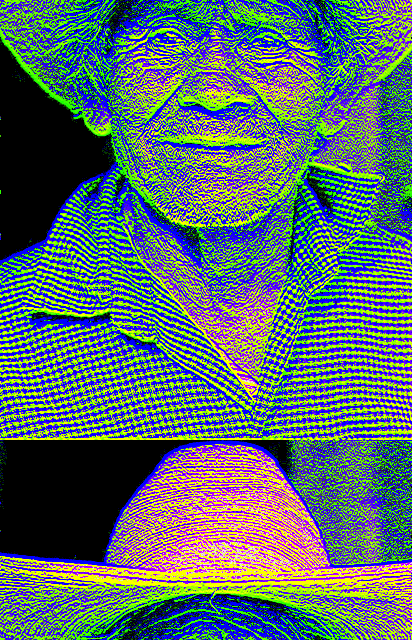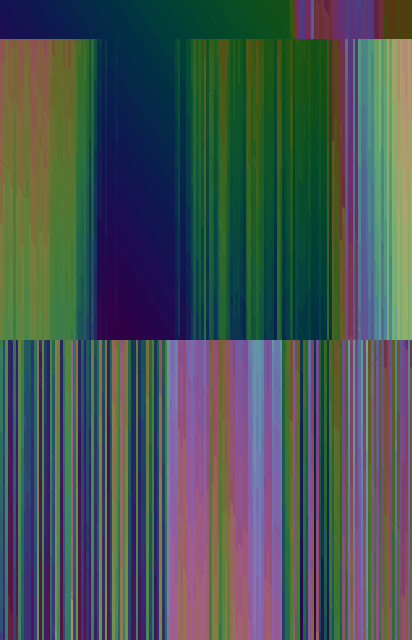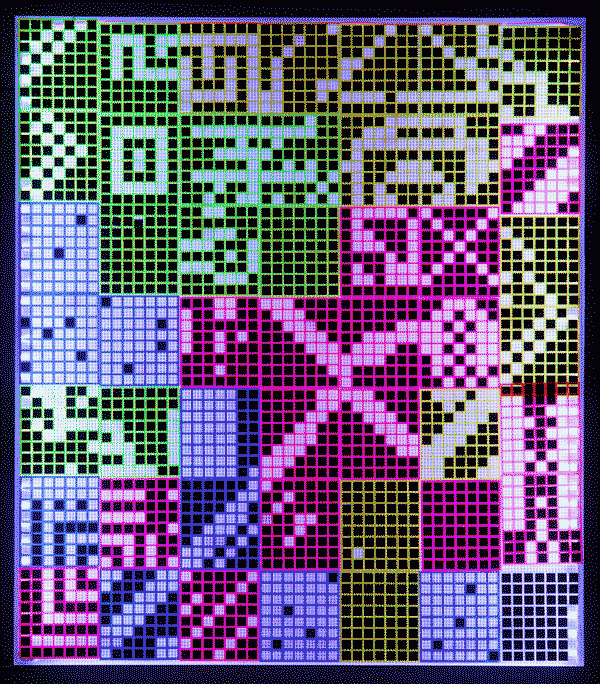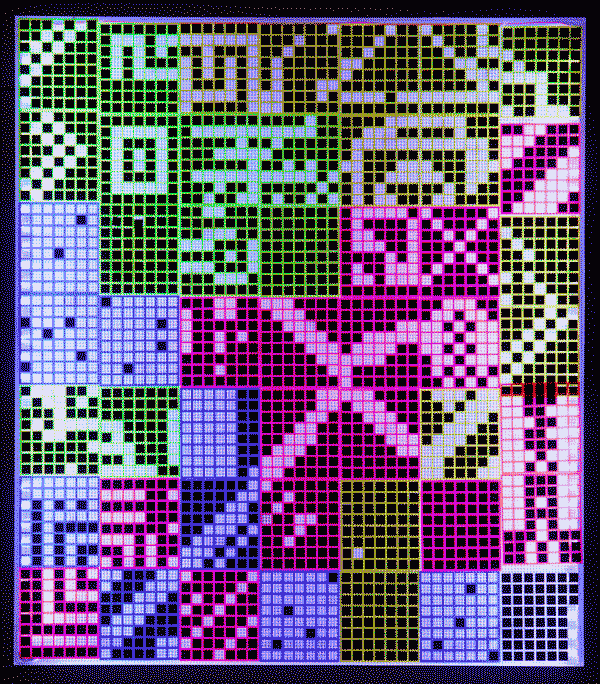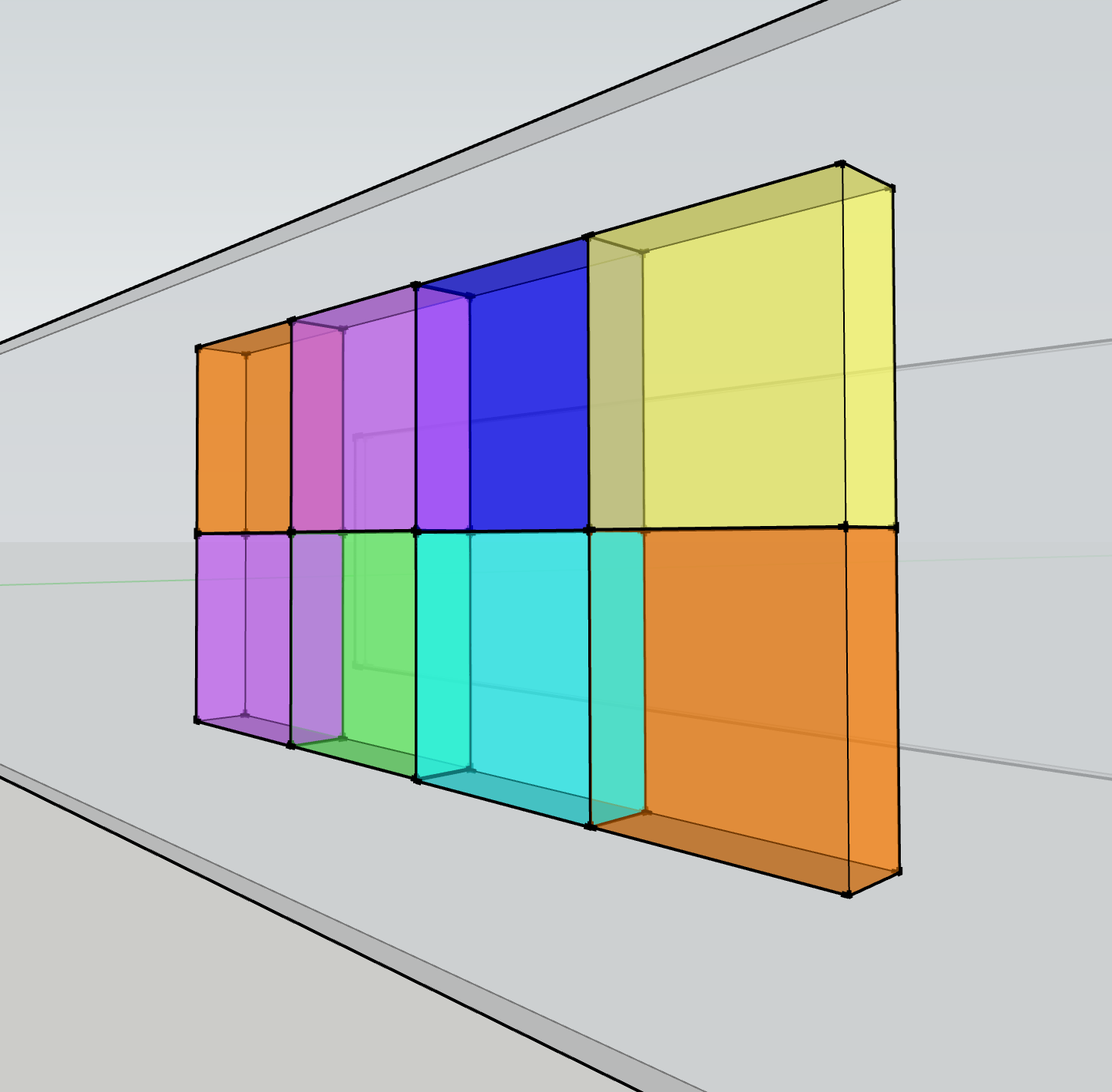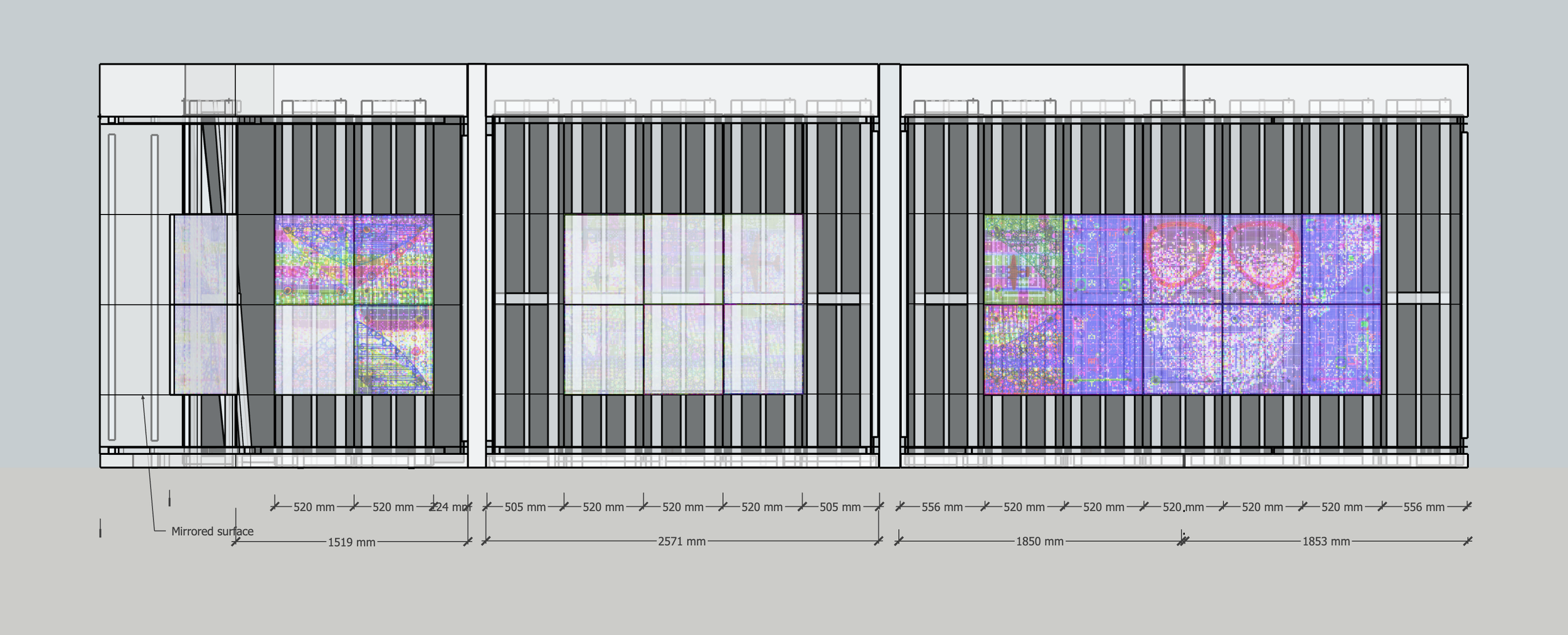peter thiedeke
image maker
Documentation in support of: Chapter 9 TWIFSY (The world is fine, save yourself)
Background
TWIFSY (The world is fine, save yourself) is a media art installation designed to stimulate thought about how urban life, which is increasingly mediated by opaque black boxes and artificial intelligence algorithms, may one day manifest in the future Smart City, where time and space have collapsed into a dystopian post-human virtual world. TWIFSY is concerned with the implications of the current sociotechnical paradigm of surveillance capitalism–the automatised monopolistic power and control over Big Data by Big Tech and the transformation of personal information, including human needs, mobility, beliefs, thoughts, and expressions into a capital commodity.
TWIFSY evolved as a thought experiment that speaks to the speculative cultures of science-fiction, futurism, literature, politics, and film. It offers citizens a space to free their imagination from the pragmatics and preoccupations of dayto-day reality. The work’s visual language stems from post-digital aesthetics of failure, where the detritus of digital technologies become raw material for a subcultural do-it-yourself approach typified by the maker and post-digital hacker movements.
Video documentation - the panels, the details inside the panels at proximity, and decoding the image-object using a mobile-phone
See 0:00–1:35 in the video file to view the external perspectives of the ambiguous image-object’s panels.
See 1:35-3:30 in the video file to view the simulations inside the image object at proximity. This imagery was recorded with a macro lens and a robotic motion control camera system.
See 3:30-5:20 which illustrates how the image object is decoded through variable viewer positions, distances, and using a camera device to reduce the pseudo-pixels to a perceptible resolution.
For best visual clarity, this video can be viewed at 2K or 4K resolution by changing settings using the cog icon. For best audio clarity, the use of headphones is recommended.
Twenty-four-panels arranged as a pseudo-media facade measuring 406cm x 208cm x 25cm
TWIFSY’s twenty-four 59cm h x 52cm w x 20cm d panels are modular, and their final form is flexible. It is currently configured as an internal architectural media façade measuring 4.09m h x 2.09m w x 23cm d. However, it can be re-configured and installed as a two-dimensional horizontal or vertical ‘screen’ array or as a 3D dimensional monolith.
Above: Under subdued lighting the panels’ colour saturation and brightness have a higher intensity. The work is entirely backlit silhouetting the tiny details.
Right: This video demonstrates the media facade’s appearance in daylight. The colour and brightness of the panels is less intense and the details are front lit by the ambient illumination, altering the works appearance.
Visual detail of the box panels from variable distances
As one moves toward TWIFSY, the illusory image object surface collapses into a pseudo-architectural space an abstracted hyperreality that reveals hundreds of tiny model pseudo-citizens–made from medical resin 3D printed from computer-generated models–each with different postures, gestures, clothing, and accessories appearing in numerous scenarios and situations.
Above: This image illustrates eight of the twenty-four panels viewed from three metres. Each panel measures 590mm H x 520mm W x 200mm D. In this arrangement, the image resolves well at greater distances and disappears at proximity
Above: This image illustrates the detail in Panel #15 at a proximity of eighty centimetres. As the viewer moves toward the image object, the illusory image disappears, and a simulated architectural space emerges to reveal hundreds of tiny model ‘citizens’, which, encapsulated in transparent enclosures, are arranged in numerous fictitious scenarios and situations.
Close-up imagery of some of the many details and ‘scenarios’ simulated within TWIFSY
On close physical inspection, TWIFSY’s intricate details relate to and mimic the networked effects of Big Tech’s panoptic schema of concealed servers. The arrangement of these figures and the tens of thousands of peripheral objects embedded within TWIFSY reveal many narratives that imply social, anti-social, voyeuristic, and narcissistic behaviours in fictitious private and public spaces, where imagery and data streams form a constant flow of advertising, entertainment, and user-generated commentary.
















Pseudo-satellite imagery
TWIFSY’s development in relief was monitored with numerous cameras, including an overhead view, progressively revealing pseudo-satellite imagery from three metres (see below) which implies miniature built and virtual environments that can be explored at ground level as pseudo-street-views.
From this process, a new aesthetic emerged, which evokes what Berry (2015) describes as the post-digital ‘asterism’ of digital material culture resembling ‘aerial photography of landscapes and cities’ providing a ‘distant reading of society and everyday life’ as an organised collective of 'functionally linked individuals’ that provides a ‘sense of cohesion in a fragmentary digital experience’ (Berry 2015, 51).
Above: This image shows sixteen of the twenty-four finished panels illuminated with white light. Captured from a three-meter birds-eye view, they cover an area of 240cm x 208cm.
Associated process imagery 2019-2023–TWIFSY under construction



















Conceiving the post-digital image objects glitch aesthetic
A remnant JPG image was enlarged into a pixelated self-referential abstraction of itself. The otherwise monochromatic appearance of this digitised black and white analogue image was accentuated with ‘noise’, generally considered a defect. The approach of incorporating aesthetic failure extended to creating apparent image motion using the visual language of GIFs–highly compressed browser-based animated looping moving image file formats. Experimental GIFs were manually created from the JPG using Photoshop to create and animate new image frames from multiple image adjustment layers, including the colour, saturation, and noise artefacts. GIFs were also generated using automated open-source freeware glitch generators.
While these generative digital processes were not directly applied to the final image object, their formal and aesthetic principles helped conceptualise a creatively destructive visual language that now reflects the collapse of the virtual world of hyper-latent imagery back into the real world. In this case, borrowing from the automated glitch generators' purposeful ‘malfunction’ and reusing analogue material to fabricate TWIFSY, the hybrid process became ‘post-digital’ (Cascone 2000, 13-14; Krapp 2011, ix-xiv; Andrews 2013, 1).
Experimenting with light-based animation
The panels' colour and brightness are individually and remotely programmable using A DMX512 digital communication system networked with CAT6 Ethernet patch cables and a black box driver that serves Art-Net protocols driven by data using LED pixel-mapping software. This configuration and level of control allow the image layer to be illuminated as a singular, recognisable whole, as fragmented sections where the panels can be illuminated independently of each other, or as any intermittent combination where the image object’s unstable, ambiguous aesthetic would drift between abstract and figurative representations that imply many things–a post-internet image object that, as Archey and Peckham (2014) contend, are physical representations of the ‘consciousness’ of the production, dissemination, and reception of existence, particularly within networks relevant to mass surveillance, data aggregation and the radical dispersion of information (Archey and Peckham 2014, 2).
GIF Reference
Above: These reference GIFs were created manually using Photoshop and virtually using online glitch generators including Glitch Wizard, Glitchatron, Snorpey, PhotoMosh, and Decim8.
Testing individual panels
Above: These test images of the backlit acrylic panels, with variable configurations of acrylic pseudo-pixels and microgrids, were used in the early developmental phase to test and program the LED’s colour, brightness, and frequency. These were then mapped across the array of twenty-four panels to create the overall glitch aesthetic.
Speculative designs for TWIFSY’s installation
The work can be arranged in variable formats including square, long, and linear, or truncated rectangular wall-mounted shapes and horizontal formats. Arranged as a 3D dimensional monolithic prism that resembles urban high-rise structures, would provide a sculptural experience that shifts the viewer’s perception of its changing appearance as they circumnavigate it.
Above: A pre-visualisation for configuration as a monolith -2.4m h x 1.4m w x 1.4m.
A horizontal array offers a different perspective of the work and use of available space
Due to the variable spatial limitations of exhibition spaces, the scale of the work in its full twenty-four-panel pseudo-media facade configuration, and the pragmatics of logistics, these mock-ups offer flexibility for the presentation of the work in small spaces. The sixteen-panel horizontal configuration below mirrors the presentation format typical of the architectural concept models used by city planners to allow the viewer multiple overhead perspectives of the image-object’s implied ground plane.
Above: Pre-visualising a 16 panel horizontal table-top array. Approx 80cm high (variable) x 236cm wide x 208cm deep.
Alternative configurations for smaller venues as either wall-hung or free-standing objects
Above: An array of up to 24 panels in a linear walll-mounted configuration 59cm h x variable w x 25cm.
Above: A 16-panel wall-mounted or free standing array, 236cm h x 208cm w x 25cm.
Above: An 8-panel wall-mounted array 118cm h x 208cm w x 25cm.
I dream…Speculative proposals for participatory artrmaking
TWIFSY can be used as a form of participatory placemaking for communion with citizens’ imagination to solicit a collective social dream for the future city. I dream… anticipates informal, inclusive, collaborative, imaginative, playful and speculative city-making, where citizens are invited to construct a bottom-up social dream for a preferred future.
Modular configurations of TWIFSY’s panels introduce the audience and set the scene for participation. The installation can be backgrounded by projections or video screen installations with looping macro imagery of TWIFSY’s internal details at the human scale to provide a gentle embodied experience of an imaginary city in motion. These visual components, enhanced with soundscapes remixed from the recordings made during the fabrication and documentation of the work, including audio of the laser cutters, motion control robots, and 3D printers overlaid with recordings of birds, people, traffic, and wind in the trees in the actual city imply future urban sonics and invoke the visitor’s imagination to consider how the future city might sound.
To facilitate direct engagement with participants and encourage world-building activities, a ludic Play Station invites visitors to assemble maquettes from TWIFSY’s surplus of prefabricated Lego-like pseudo-pixels, microgrids, and other Meccano-like acrylic structures, where they might also 3D print pseudo-citizens and experiment with luminance, colour, and mood on remotely controllable backlit panels. Finally, a participatory Dream Wall invites citizens to leave written notes, poems, questions, or protestations about other possibilities–their impressions, thoughts, ideas, or narratives for a speculative city.
Above: This plan view illustrates various artefacts that form a participatory design, including a Play Station glowing panels and 3D printers can each be operated by a participant using a small remote control with a colour and brightness wheel. The panels can be connected to a multi-plug board that runs on a standard wall outlet.
Above: Visitors are invited to respond to the prompt I dream of a … and leave a short text of their impressions, thoughts or ideas on the shared Dream Wall to become a collective narrative for the future city. Participants can write these texts onto removable stickers large enough for a single sentence or statement and placed on the Dream Wall.
Above: This visualisation illustrates the position of an alternative installation, where the panels form a central projection ‘tower’.
Above: This visualisation illustrates the scale of projected imagery from the central ‘tower’ relative to the scale of projected imagery and the overall subued mood that can be achieved in a blacked-oy space.
ISEA2024– Speculative installation in the Queen Street Mall (commissioned by the Brisbane City Council in April 2024)
ISEA2024 requested TWIFSY for exhibition in the pedestrianised Queen Street Mall in the Brisbane City central business district in June 2024. The Queen Street Mall is approximately 500 metres long, with six major shopping centres and more than 700 retailers over 40,000 square metres of space. The visualisations show TWIFSY’s panels distributed across three windows at the southwestern end of the mall. The nature of the existing retail space, which required a treatment for dressing the window cavities to enhance the installation, used a reflected mise-en-abyme approach to give the work greater depth in the shallow spaces.
Above: This mock-up image shows the panels arranged in two rows with mirrored walls, floors and ceilings designed to animate as the panels' colours and brightness shift.
These installations provide the opportunity for continued experimentation with civic hacking–an antidotal visual synecdoche to counter advertising that pollutes the visual amenities of the city’s retail centre, where something might otherwise be missing–in this case, speculation of a dysfunctional future world consumed by its habitual overconsumption.
Above: The work is set back from the window glass at approximately 50cm so that the viewer can register the tiny details inside the panels.
Above: This image shows the spacing of the panels over the three retail windows. The darker shading shows the position of the reflective black mirrors that face the viewer, and the grey shading represents the mirrored wall, ceiling, and floor surfaces.
Above: This image shows a section of the installation and the panel heights, depths, and distances relative to the glass window facades and the viewer.
Above: This elevation shows the structural timber framework designed to support the panels.
Above: This plan view shows the elongated nature of the inter-connected window spaces.






